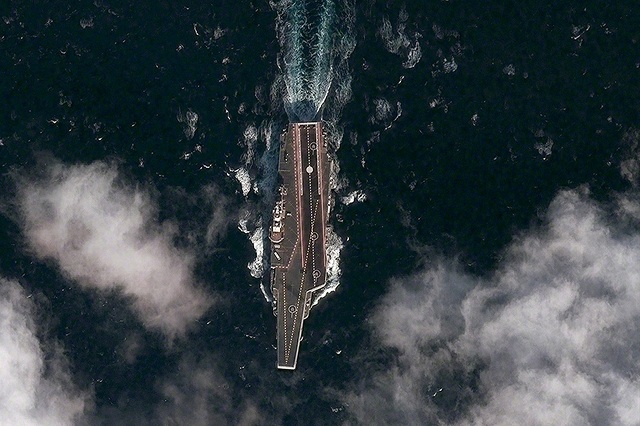 |
| China’s current aircraft carrier Liaoning underway |
By Shannon Tiezzi
For the first time, PLAN officers provide details on China’s second aircraft carrier.
Chinese media are abuzz with a report (originally published by Hong Kong Commercial Daily) confirming construction on China’s second aircraft carrier – the first entirely indigenously produced carrier in China’s fleet. While there have been numerous rumors that construction is underway on a companion to the Liaoning (the first aircraft carrier commissioned into the Chinese Navy), the new report is different in a few respects: one, it directly cites named PLA officials as sources (all of whom confirm the construction) and two, it mentions specific ways the new carrier will improve on the capabilities of the Liaoning.
First, the sources: Admiral Liu Xiaojiang, formerly a political commissar of the PLAN; Vice Admiral Ding Haichun, a deputy political commissar of the PLA Navy; and Rear Admiral Ma Weiming, a PLAN expert in “naval propulsion and electrical engineering” (often-honored for his contributions to Chinese military technology). As Chinese media reports noted, this marked the first time PLAN officers publicly acknowledged the construction of a second aircraft carrier (although there have been rumors about the project for years). Previous reports seeming to confirm the construction were quickly scrubbed from the Chinese internet.
As for new technology, Rear Admiral Ma said China has tested a new launch system “many times” and that all tests so far have gone quite smoothly. Ma spoke of “breakthroughs” in an electromagnetic catapult launch system for the new carrier. The new technology will set it apart from the Liaoning, which uses a more-outdated “ski jump” launch system. Breakthroughs in developing a catapult system would result in an “enormous increase” in the flight radius and payload of carrier-based aircraft, Ma said. With this technology, Ma claimed, China will be on par with or even more advanced than the United States.
Read the full story at The Diplomat
